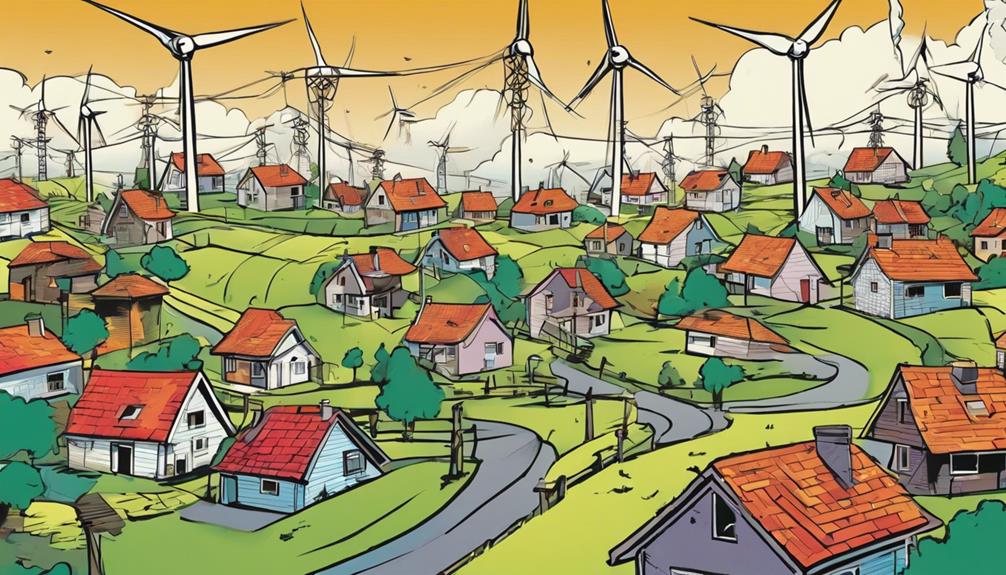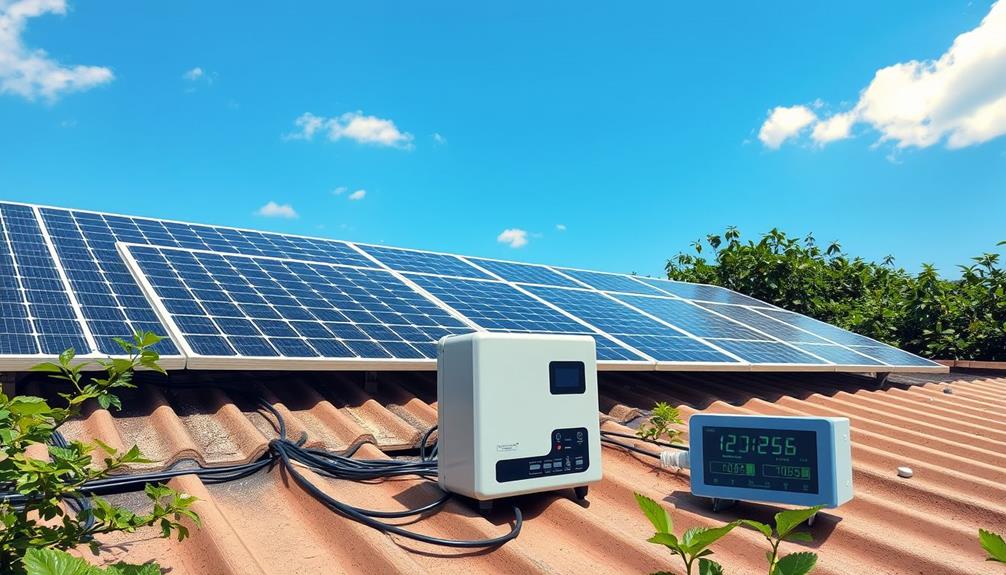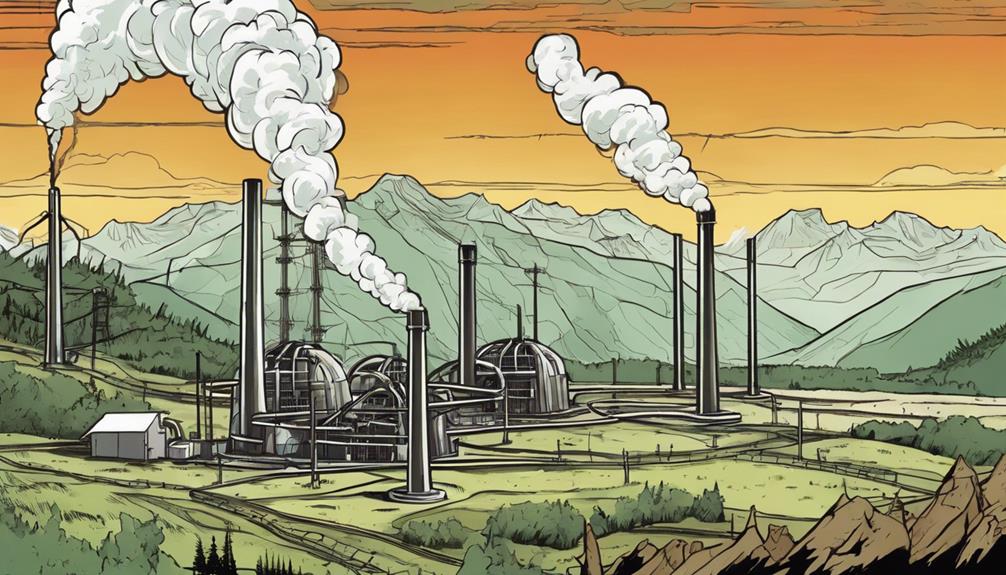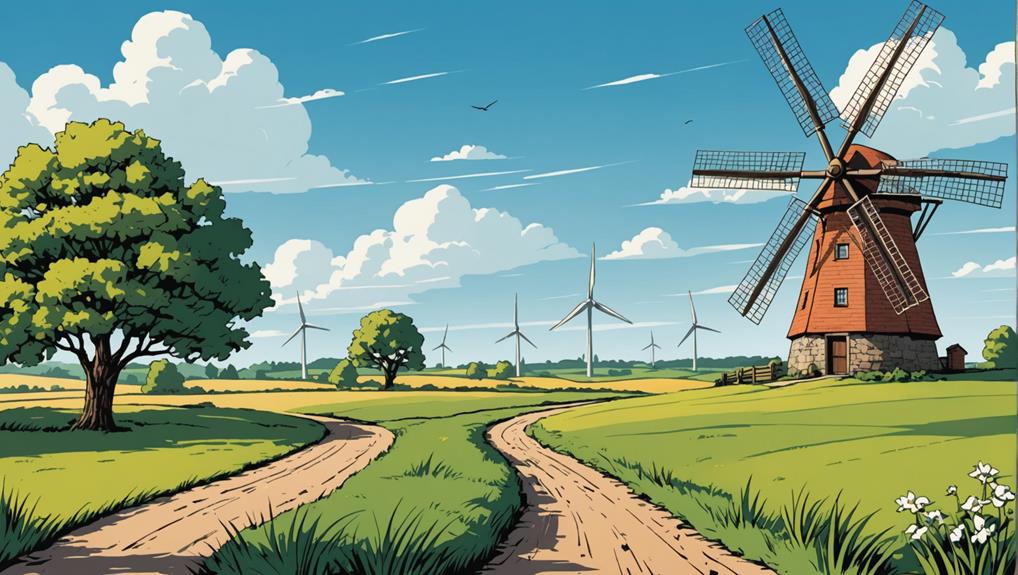A wind turbine can power hundreds of homes annually, with larger turbines capable of providing for thousands. The size and capacity of the turbine determine how many houses it can energize efficiently. If you want to know more about the factors influencing wind turbine efficiency and applications, keep exploring the details available.
Key Takeaways
- A 1.5 MW turbine can power around 300 American households annually.
- Larger turbines like the Haliade-X can power thousands of homes.
- Each turbine contributes to the energy needs of approximately 300 households annually.
- An average turbine can produce electricity for around 300 homes annually.
- One megawatt turbine can provide electricity for 300 homes annually.
Wind Turbine Capacity and Electricity Production
When considering wind turbine capacity and electricity production, grasping the relationship between turbine size and the amount of power generated is vital. Wind turbines, such as a typical 1.5 MW turbine, have the capacity to power around 300 American households annually. This power output is influenced by factors like wind speed and the size of the turbine itself.
The average capacity factor of wind turbines, approximately 36%, plays a significant role in determining the actual electricity production of these renewable energy sources. Larger turbines, like the Haliade-X, have the capability to power thousands of homes, showcasing the impact of turbine size on electricity generation.
Moreover, when multiple turbines are part of a wind farm, they can collectively contribute to powering millions of households, depending on their size and location. Understanding how turbine size affects power output is essential in maximizing the efficiency and effectiveness of wind energy production for residential consumption.
Factors Influencing Wind Turbine Efficiency
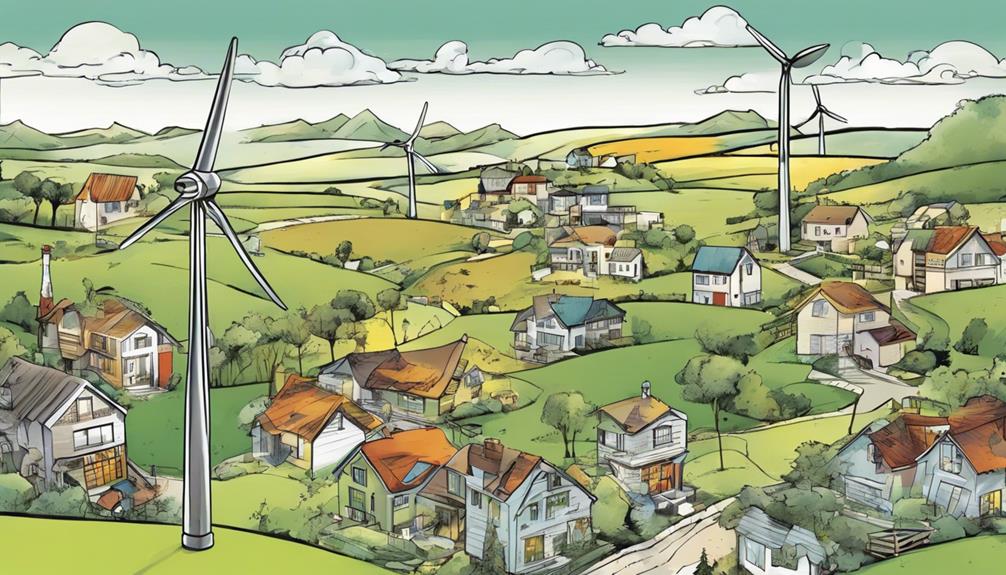
When considering wind turbine efficiency, various factors come into play, shaping the overall energy output. Factors like wind speed, turbine size, and location all have a significant impact on how efficiently a wind turbine generates power.
Understanding and optimizing these variables can help you maximize the energy production capacity of your wind turbine system.
Efficiency Factors Analysis
To enhance the effectiveness of wind turbine energy generation, various factors such as wind speed, turbine size, and location must be carefully analyzed. The effectiveness of wind turbines is greatly influenced by the speed of the wind they encounter.
Additionally, the size of the turbine and its position in a specific location play essential roles in determining how efficiently it generates electricity. Regular maintenance is also necessary to guarantee that the turbines operate at their peak effectiveness levels.
Moreover, terrain characteristics and blade design notably impact the energy output efficiency of wind turbines. Design, size, and precision of turbine blades are key elements to take into account for maximizing effectiveness.
Proper orientation of turbines towards the wind direction is crucial for optimal performance. By analyzing and optimizing these factors, you can improve the effectiveness of wind turbine electricity production and maximize the power output for your needs.
Impactful Efficiency Variables
Several key variables greatly impact the efficiency of wind turbines, influencing their power generation capabilities. Factors such as wind speed, turbine size, location, weather conditions, maintenance, terrain, and blade design all play essential roles in determining the effectiveness of wind turbines in generating electricity for households.
To highlight the significance of these impactful efficiency variables, the table below summarizes their role in influencing wind turbine efficiency:
| Efficiency Variables | Impact on Wind Turbine Efficiency |
|---|---|
| Wind Speed | Higher speeds result in increased energy production. |
| Turbine Size | Larger turbines can capture more wind energy. |
| Location | Strategic placement in high-wind areas enhances efficiency. |
| Weather Conditions | Adverse conditions can decrease power output. |
| Maintenance | Regular upkeep is essential for peak performance. |
Understanding and optimizing these factors can lead to higher efficiency and better energy output from wind turbines, making them a more dependable and sustainable source of power for residential use.
Altitude Impact on Wind Turbines
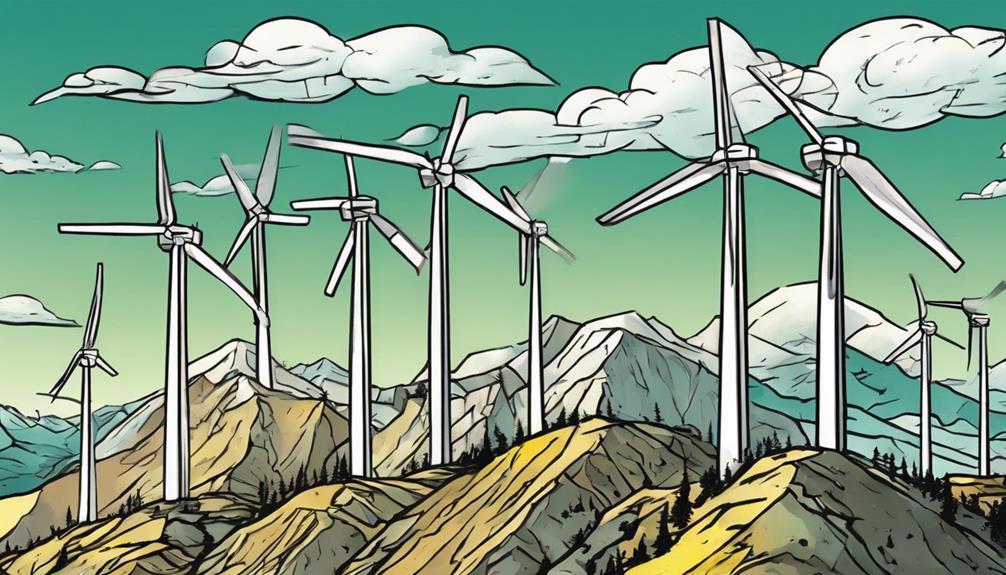
You should know that altitude greatly affects wind turbine performance by exposing them to stronger wind speeds, thereby increasing electricity generation efficiency.
At higher altitudes, wind turbines have the potential to produce more power compared to those installed at lower elevations.
The impact of altitude is vital for maximizing the energy output and efficiency of wind turbines, especially for horizontal-axis turbines that rely on high wind speeds for best operation.
Altitude and Wind Speed
Harnessing wind power for residential use can be greatly influenced by the altitude at which wind turbines are located, impacting the wind speeds they're exposed to and ultimately affecting their electricity generation potential.
Wind turbines situated at higher altitudes benefit from stronger wind speeds, which can significantly enhance their power output and efficiency. The altitude plays an important role in ensuring that wind turbines receive the necessary wind speeds to generate electricity effectively.
Turbines located at elevated altitudes have the advantage of accessing increased wind speeds, allowing them to produce more electricity compared to turbines at lower altitudes. This improved wind speed at higher altitudes is essential for maximizing the performance of wind turbines and optimizing their electricity generation capacity.
As such, when considering the installation of wind turbines for residential energy production, the altitude must be carefully evaluated to harness the full potential of wind power for efficient electricity generation.
Efficiency in Higher Altitudes
Positioning wind turbines at elevated heights greatly boosts their efficiency by capitalizing on the increased wind speeds available. Wind turbines placed at elevated heights benefit from stronger and more consistent winds, leading to enhanced electricity generation potential.
Altitude greatly influences the efficiency of wind turbines, especially for horizontal turbines that rely on high wind speeds for best power generation. By strategically locating turbines at elevated heights, where winds are strongest and most reliable, the energy output and overall efficiency of the turbines are maximized.
The altitude at which wind turbines are placed plays an essential role in determining the success of harnessing wind energy for electricity generation. Thus, the decision to position wind turbines at elevated heights is a strategic choice to maximize that they operate at their highest efficiency levels, taking full advantage of the increased wind speeds to generate power effectively.
Wind Turbine Applications and Installation
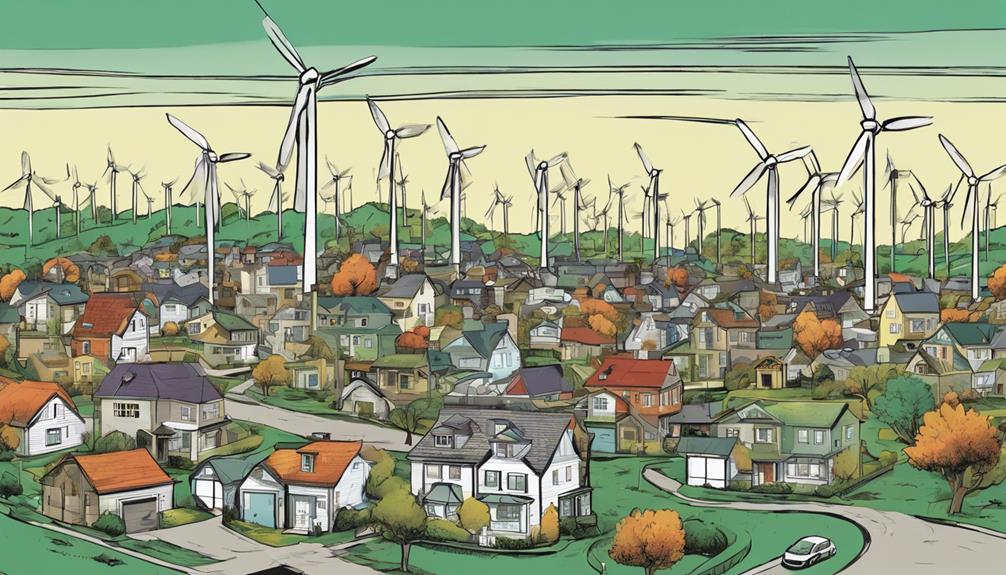
The applications and installation of wind turbines play an important role in meeting various energy needs, from individual homes to entire communities. Wind turbines, ranging in size and capacity, contribute significantly to generating clean and sustainable electricity for households.
Whether it's a small wind turbine for a single home or a large wind farm powering an entire community, these installations harness the power of the wind to produce energy efficiently. Additionally, the installation of on-shore and off-shore wind turbines plays a vital part in achieving renewable energy goals and reducing carbon emissions.
Each wind turbine, regardless of its size, plays a crucial role in the collective effort to shift towards cleaner energy sources. By utilizing wind power through these installations, communities can reduce their reliance on fossil fuels and move towards a more sustainable energy future.
Wind Turbine Power Generation Rate
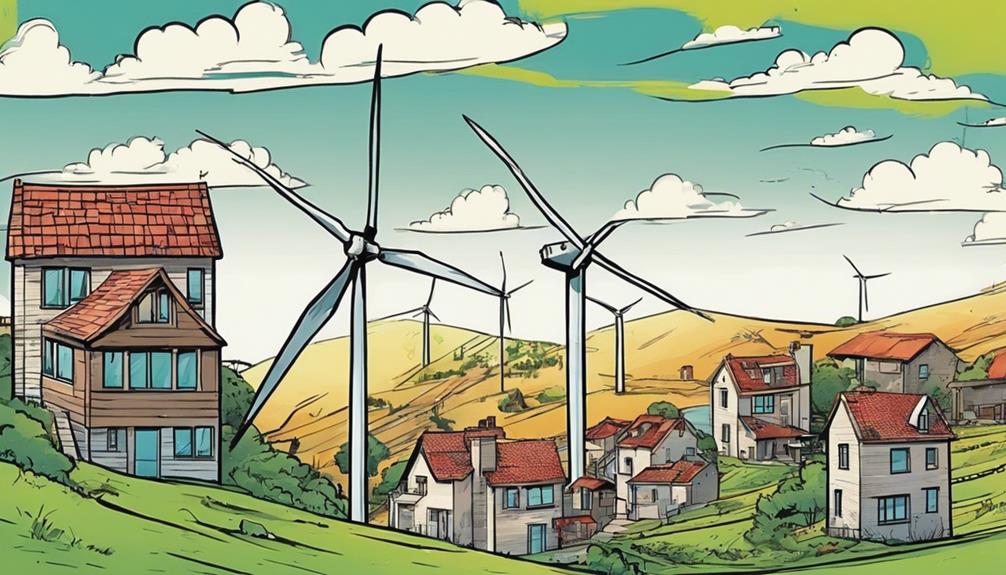
Wind turbines have a significant impact on power generation rates, with a typical turbine capable of producing electricity for around 300 homes annually. The average land-based wind turbine boasts a power generation capacity ranging from one to five megawatts.
In 2020, an average wind turbine could generate enough electricity in just 46 minutes to power a home for a month. These turbines need a wind speed of about nine mph to efficiently start producing electricity. The peak energy production of wind turbines typically transpires at wind speeds between 30 and 55 mph.
The capacity of wind turbines to generate electricity for residential areas is evident, with each turbine playing an essential role in contributing to the energy needs of approximately 300 households on an annual basis. By harnessing the power of wind, these turbines efficiently generate electricity, making them a sustainable and eco-friendly option for meeting residential energy demands.
Wind Turbine Growth and Innovations
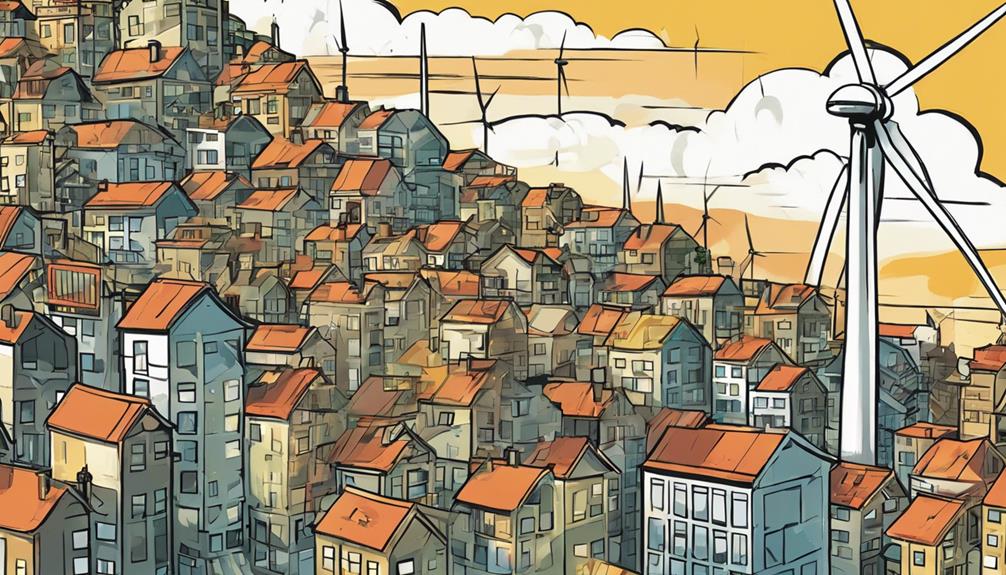
With the wind energy industry poised for significant growth in the coming years, innovations and advancements are driving the expansion of wind turbine technology. Wind turbine growth is expected to soar by around 44% in the next decade, leading to an increased demand for skilled wind turbine technicians. This surge in the wind energy industry has made wind turbine technicians one of the fastest-growing job sectors in the U.S., offering plentiful job opportunities. In 2021, there were approximately 120,000 wind industry jobs in the U.S., indicating the significant employment potential within the sector.
Furthermore, these advancements in wind turbine technology aren't only creating job opportunities but also contributing to wind power expansion. Wind power expansion plays an essential role in mitigating climate change, with the capacity to prevent around 340 million metric tons of CO2 emissions annually.
Countries like Denmark are already showcasing the potential of wind energy, with half of their total energy consumption being supplied by wind power. This exemplifies the substantial impact wind energy can have in meeting significant energy needs.
Wind Turbines for Residential Energy Needs
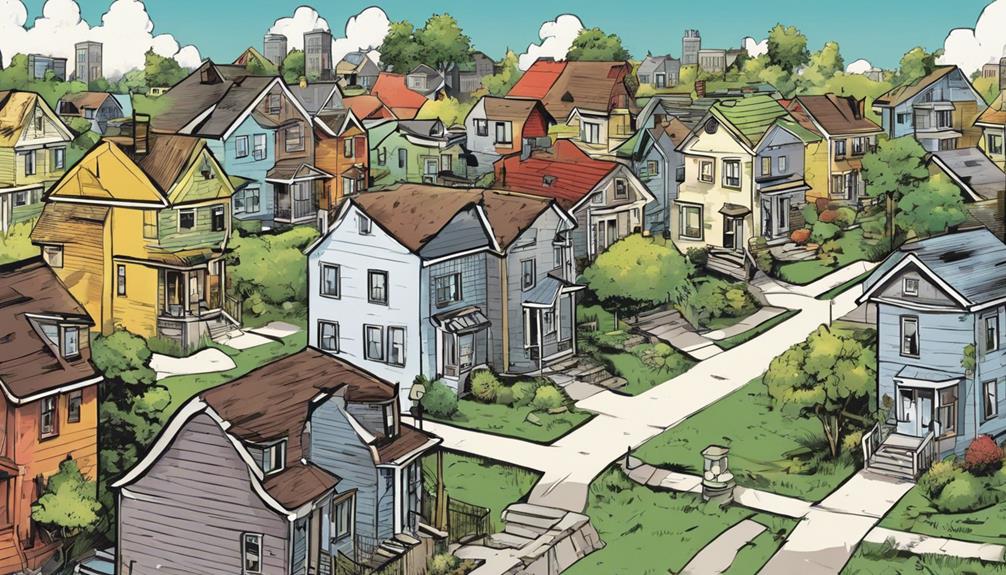
For households looking to harness renewable energy, residential wind turbines offer a sustainable solution to meet your energy needs efficiently.
A typical residential wind turbine can power around 300 homes annually, showcasing the significant energy production capabilities of these systems.
In 2020, an average wind turbine generated enough electricity in just 46 minutes to power a home for an entire month, highlighting the efficiency and effectiveness of wind energy.
These turbines require a minimum wind speed of about nine mph to begin producing energy, with the highest energy output typically occurring between wind speeds of 30 and 55 mph.
With one megawatt turbine capable of providing electricity for 300 homes on an annual basis, residential wind turbines are a viable option for powering homes sustainably and reducing reliance on traditional energy sources.
Challenges and Considerations in Wind Energy Adoption
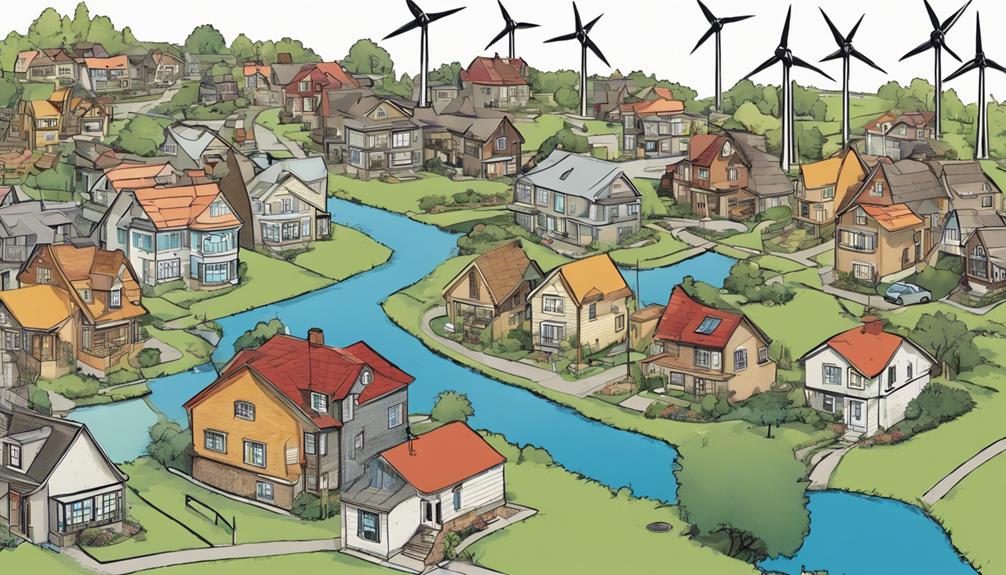
Challenges arise in the adoption of wind energy due to visual and noise impacts, concerns for wildlife, grid management issues, and offshore logistical complexities.
The visual and noise impacts of wind turbines can lead to opposition from communities, while wildlife concerns, particularly for birds and bats, require careful siting and mitigation strategies.
Grid management challenges stem from the intermittency of wind power, necessitating backup sources to ensure a stable energy supply.
Offshore wind farms face unique logistical and environmental hurdles compared to onshore installations, such as maintenance planning and transmission infrastructure.
Long-term sustainability also relies on meticulous maintenance and decommissioning strategies for wind turbines.
Furthermore, public perception plays an essential role in the energy sector adoption of wind energy, influencing policy decisions and investment.
Addressing these challenges and considerations is crucial for the successful integration and expansion of wind power in the renewable energy landscape.
Frequently Asked Questions
How Many Homes Can a Wind Turbine Supply?
A wind turbine can supply electricity to hundreds of homes based on its size and location. Larger turbines, like 2-3 MW models, have the capacity to power over 600 homes yearly. The number varies with factors like wind speed.
How Many Wind Turbines Does It Take to Power 1000 Homes?
To light up 1000 homes, you'll need around 1.5 to 2 wind turbines, each rated at 2.5 MW. It's like planting seeds in fertile soil; with the right factors, these turbines will bloom energy for all those homes.
How Many Turns of Wind Turbine Does It Take to Power a House?
To power a house, a wind turbine needs multiple turns to generate electricity. It depends on the turbine's size and efficiency. The more turns it makes, the more power it produces for your home.
How Big of a Wind Turbine Do You Need to Power a House?
To power a house with a wind turbine, you'll need a sizeable one. Think 10 kW for two homes, or even a 15 kW for larger ones. On average, a 5 kW turbine handles a single-family home.
How Many Wind Turbines Would I Need to Power My Home or Property?
When considering wind turbine installation options to power your home or property, the number of turbines needed depends on your energy consumption and the wind conditions in your area. On average, a single wind turbine can generate enough electricity for one household, but consult a professional to determine the best solution for your specific needs.
Conclusion
So, next time you see a wind turbine spinning gracefully in the breeze, remember its power.
With the ability to generate electricity for multiple houses, these towering giants are like modern-day wizards, casting spells of sustainable energy across the land.
Embrace the wind, harness its strength, and join the movement towards a cleaner, greener future.
